#indonesian jungle
Text


Jungle nights
4 notes
·
View notes
Text
Astro Observation: Leo ♌ Part 1
🔎Discretion: consider zodiac signs, aspects, and placements in a birth chart as a map of the soul, it gives you direction on how to recognize its influence or impact within you, as the saying goes: "the stars impels; they don't compel". These observations also depends on degrees, houses, aspects to planets and mostly the free will of the person. Your birth chart gives you information about the pattern of how your energy plays out in the universe but in the end it's your own free will which is the one that decides on how to manage the energy.

Webtoon/Manhwa: The Remarried Empress/The Second Marriage
🦁 Leo placements (venus, moon, mars, leo in 5th house, aura in leo, leo rising, etc) have this Emperor/Empress or King/Queen presence in how they carry themselves with dignity or pride and confidence. They exudes regal and rich vibrance which cannot be easily disrespected, they would still stand tall with strong pride like the packs of lion/tigers/jaguars. This reminds me as well of Jason Momoa, he definitely looks like a Lion, King of the Jungle 👇🏻🔥

🦁 Leos placements are warm-hearted people and they love to generously give extravagance/high quality gifts or host parties to celebrate, nothing is small from what they do towards themselves and to others, it would be grand like a King or Queen celebrate annual imperial events.
🦁 Leos are the fixed fire people, so their spirit are fierce and lively (depends on their moon signs, it could vary) but most of them have strong presence so everywhere they go, people would notice them. They have leadership quality too so they could help others or groups by giving inspirative examples from whatever that they are doing. Since the Sun is their planet ruler, Sun could also symbolized as clear willpower, this could be a good inspiration for others to follow and to pridefully express their own personal identity. From my personally POV, "Being unapologetically myself and I stand proud of it!!!" would be the right motto for these Leos.
🦁 Theme song for Leo placements (Leo Rising, Leo in 10th House, Leo MC, Leo Mars, Leo Venus) that I kept visualizing is "Fresh Out The Oven" from JLO (a Leo Woman). From my perspective, having alll those gold jewelleries she wore from earrings, necklace, bracelets, the outfit and shoes, and the nails art too were very typical Leo fashion style. Two other examples of Leo woman I know who both have Leo Sun and Leo Moon (basically Leo Stellium) are Evis Xheneti (Munky's wife, Munky is the bassist from KoRn music group) and Cinta Laura Kiehl (an Indonesian Actress/Music Artist/Philanthropist).
youtube



🦁 Leo women I noticed have this sharp fingernails 'claws' and they could have strong arms when physically fighting with someone else, even though the hands or fingers may seem soft but they still have that strong tiger like strength.
🦁 Besides the claws, LOOK AT THE JAWLINE, SO PROMINENT, SO SHARP IT COULD SLICE YOU LIKE A SHARP KNIFE LOL 🔥🔪. I notice Leo women have strong or prominent jawline, and if they could or like to dress themselves and do make up, they would look like cover models, literally all Leo women. But Leo men, they would look primal (the vibe mostly) in every occassion (formal or non-formal) like Viking soldiers or Genghis Khan, or even like those men who wore war outfits.
©SerpentPatrol
#astrology#astro notes#tropical astrology#zodiac#astro community#zodiac sign#aries#astro observations#scorpio#aquarius#taurus#gemini#cancer#leo#virgo#libra#sagittarius#capricorn#pisces#astrolibrary#astronotes#archetypes#lioness#king#queen#empress#emperor#leo woman#leo man#Youtube
175 notes
·
View notes
Text




‘WILD FIBERS’ Armchair by Aurelie Hoegy,
Rattan
The rattan material used for the Wild Fibers Collection is collected in the Indonesian jungle respecting a natural cycle of growth that do not affect the middle and is not from deforestation. This rattan is a completly ecological natural fibres guaranted with no chemical treatment during the processing.
The striking creations of Aurélie Hoegy appear wild at first glance: a sudden movement of the body, the surprise of dancing hair or the twitch of lively materials found deep in a tropical jungle. Yet upon closer inspection, the designer’s sculptural objects reveal themselves to be so much more: innovative yarns that have been masterfully twisted into a plaited chair, or natural fibres meticulously coiffed into an oversized daybed that holds court like a matriarch.
Working from her Parisian atelier while travelling to learn from rattan masters in Bali or collaborate on projects in Puerto Escondido.
https://aureliehoegy.com/about/
40 notes
·
View notes
Text
Often described as the world’s largest Buddhist monument, Borobudur rises from the jungles of central Java: a nine-leveled step pyramid decorated with hundreds of Buddha statues and more than 2,000 carved stone relief panels. Completed in 835 AD by Buddhist monarchs who were repurposing an earlier Hindu structure, Borobudur was erected as “a testament to the greatness of Buddhism and the king who built it,” says religion scholar and Borobudur expert Uday Dokras.
Though Buddhists make up less than one percent of Indonesia’s population today, Borobudur still functions as a holy site of pilgrimage, as well as a popular tourist destination. But for the Indonesian Gastronomy Community (IGC), a nonprofit organization dedicated to preserving and celebrating Indonesian food culture, Borobudur is “not just a temple that people can visit,” says IGC chair Ria Musiawan. The structure’s meticulous relief carvings, which depict scenes of daily life for all levels of ninth-century Javanese society, provide a vital source of information about the people who created it. Borobudur can tell us how the inhabitants of Java’s ancient Mataram kingdom lived, worked, worshiped, and—as the IGC demonstrated in an event series that ended in 2023—ate.
The IGC sees food as a way to unite Indonesians, but the organization also considers international gastrodiplomacy as a part of their mission. Globally, Indonesian food is less well-known than other Southeast Asian cuisines, but the country’s government has recently made efforts to boost its reputation, declaring not one, but five official national dishes in 2018. To promote Indonesian cuisine, the IGC organizes online and in-person events based around both modern and historical Indonesian food. In 2022, they launched an educational series entitled Gastronosia: From Borobudur to the World. The first event in the series was a virtual talk, but subsequent dates included in-person dinners, with a menu inspired by the reliefs of Borobudur and written inscriptions from contemporary Javanese sites.
In collaboration with Indonesia’s Ministry of Foreign Affairs and other partner organizations, the first meal in the Gastronosia series was, fittingly, held at Borobudur, with a small group of guests. The largest event, which hosted 100 guests at the National Museum in Jakarta, aimed to recreate a type of ancient royal feast known as a Mahamangsa in Old Javanese, meaning “the food of kings.” The IGC’s Mahamangsa appeared alongside a multimedia museum exhibition, with video screens depicting the art of ancient Mataram that inspired the menu and displays of historical cooking tools, such as woven baskets for winnowing and steaming rice. Another event, held at Kembang Goela Restaurant, featured more than 50 international ambassadors and diplomats invited by the Ministry of Foreign Affairs.
But how does one translate 1,000-year-old stone carvings into a modern menu that’s not only historically accurate, but appetizing? “We have to have this very wide imagination,” says Musiawan. “You only see the relief [depicting] the food…but you cannot find out how it tastes.” The IGC designed and tested a Gastronosia menu with the help of Chef Sumartoyo of Bale Raos Restaurant in Yogyakarta, and Riris Purbasari, an archaeologist from the Central Java Province Cultural Heritage Preservation Center, who had been researching the food of Borobudur’s reliefs since 2017.
The range of human activities depicted in the reliefs of Borobudur is so wide that it has inspired research in areas of study stretching from music to weaponry. There have even been seaworthy reconstructions based on the “Borobudur Ships” displayed on the site’s lower levels, exquisitely rendered vessels like the ones that facilitated trade in ancient Southeast Asia. So it’s no surprise that Borobudur has no shortage of depictions of food-related scenes, from village agricultural labor, to the splendor of a royal Mahamangsa, to a bustling urban marketplace. Baskets of tropical fruit, nets full of fish, and even some modern Indonesian dishes are recognizable in the reliefs, such as tumpeng, a tall cone of rice surrounded by side dishes, which is still prepared for special occasions. Some images are allegories for Buddhist concepts, providing what Borobudur archaeologist John Mikic called “a visual aid for teaching a gentle philosophy of life." Uday Dokras suggests that these diverse scenes might have been chosen to help ancient visitors “identify with their own life,” making the monument’s unique religious messaging relatable. The reliefs illustrate ascending levels of enlightenment, so that visitors walk the path of life outlined by the Buddha’s teachings: from a turbulent world ruled by earthly desires at the lowest level, to tranquil nirvana at the summit.
Musiawan says that the IGC research team combined information from Borobudur with inscriptions from other Javanese sites of the same era that referenced royal banquets. While Borobudur’s reliefs show activities like farming, hunting, fishing, and dining, fine details of the food on plates or in baskets can be difficult to make out, especially since the painted plaster that originally covered the stone has long-since faded. Ninth-century court records etched into copper sheets or stone for posterity—some accidentally uncovered by modern construction projects—helped fill in the blanks when it came to what exactly people were eating. These inscriptions describe the royal banquets of ancient Mataram as huge events: One that served as a key inspiration for the IGC featured 57 sacks of rice, six water buffalo, and 100 chickens. There are no known written recipes from the era, but some writings provide enough detail for dishes to be approximated, such as freshwater eel “grilled with sweet spices” or ground buffalo meatballs seasoned with “a touch of sweetness,” in the words of the inscriptions, both of which were served at Gastronosia events.
Sugar appears to have been an important component in ancient Mataram’s royal feasts: A survey of food mentions across Old Javanese royal inscriptions revealed 34 kinds of sweets out of 107 named dishes. Gastronosia’s Mahamangsa ended with dwadal, a sticky palm-sugar toffee known as dodol in modern Indonesian, and an array of tropical fruits native to Java such as jackfruit and durian. Other dishes recreated by the IGC included catfish stewed in coconut milk, stir-fried banana-tree core, and kinca, an ancient alcohol made from fermented tamarind, which was offered alongside juice from the lychee-like toddy palm fruit as an alcohol-free option.
Musiawan describes the hunting of animals such as deer, boar, and water buffalo as an important source of meat in ninth-century Java. Domestic cattle were not eaten, she explains, because the people of ancient Mataram “believed that cows have religious value.” While Gastronosia’s events served wild game and foraged wild greens, rice also featured prominently, a key staple in Mataram that forms the subject of several of Borobudur’s reliefs. It was the mastery of rice cultivation that allowed Mataram to support a large population and become a regional power in ninth-century Southeast Asia. Rice’s importance as a staple crop also led to its inclusion in religious rituals; Dokras explains that in many regions of Asia, rice is still an essential component of the Buddhist temple offerings known as prasad.
The indigenous Southeast Asian ingredients used in Gastronosia’s Mahamangsa included some still widely-popular today, such as coconut, alongside others that have fallen into obscurity, like the water plant genjer or “yellow velvetleaf.” Musiawan acknowledges that modern diners might find some reconstructed ancient dishes “very, very simple” compared to what they’re used to “because of many ingredients we have [now] that weren’t there before.” But in other cases, ninth-century chefs were able to achieve similar flavors to modern Indonesian food by using their own native ingredients. Spiciness is a notable example. Today, chillies are near-ubiquitous in Indonesian cuisine, and Java is especially known for its sambal, a spicy relish-like condiment that combines pounded chillies with shallots, garlic, and other ingredients. But in ancient Mataram, sambal was made with native hot spices, such as several kinds of ginger; andaliman, a dried tree-berry with a mouth-numbing effect like the related Sichuan pepper; and cabya or Javanese long pepper. “It tastes different than the chili now,” Musiawan says of cabya, “but it gives the same hot sensation.” Chillies, introduced in the early modern era by European traders, are still called cabai in Indonesian, a name derived from the native cabya they supplanted.
Gastronosia is just the beginning of IGC’s plans to explore Indonesian food history through interactive events. Next, they intend to do a series on the food of ancient Bali. By delving into the historic roots of dishes Indonesians know and love, the IGC hopes to get both Indonesians and foreigners curious about the country’s history, and dispel preconceptions about what life was like long ago. Musiawan says some guests didn’t expect to enjoy the diet of a ninth-century Javanese noble as much as they did. Before experiencing Gastronosia, she says, “They thought that the food couldn't be eaten.” But afterward, “They’re glad that, actually, it's very delicious.”
18 notes
·
View notes
Text









✨🇮🇩 Rumah Gadang 🇮🇩✨
Channeling my inner Indonesian with For Rent expension pack! I present to you Rumah Gadang — a traditional Indonesian architecture. Influenced by the rich cultural heritage of my country, Indonesia. ✨
Build Details
• § 69.680 | 40x30
• 2 Bedroom | 1 Bathroom
• No CC | Playtested | Functional
EP: For Rent, Horse Ranch, Cottage Living, Island Living, City Living, Snowy Escape, Seasons, Get Together
GP: Jungle Adventure, Spa Day
SP: Home Chef Hustle, Laundry Day
Kit: Basement Treasures
✨ SPEED BUILD ON MY YOUTUBE CHANNEL! ✨
📥 Download Here 📥
Gallery ID: hanquarter
Tray Files: https://simfileshare.net/folder/206549/
#sims 4#the sims 4#the sims 4 build#the sims 4 builds#builds#ts4#the sims#decor#home decor#indonesia#rumah gadang#traditional#house#culture#heritage#cultures#southeast#asia#houses#padang#west sumatra#sumatera#island#mountain#sumatera barat#household#village#villages#wonderful indonesia
23 notes
·
View notes
Note
In honor of the big win, could I request a Rick O'Connell X Fem!Reader and they both go treasure hunting? Maybe the reader saves Rick or something? Super fluff and a bit of some teasing? Thank you! 😘
OMG FINALLY I HAVE BEEN WANTING TO WRITE FOR THE MUMMY! ❤️
You'd be lost and alone without me
Pairing: Rick O'connell x reader
Description: You and Rick confess your feelings for each other after saving him on your journey in Indonesia

You ran as fast as you could being chased by the group of people after the ancient artifact that you and Rick had been after and found to take to a museum in the US. The two of you had heard of an ancient jewel that was hidden in ruins of the Indonesian jungle immediately agreeing not only to go and bring it back to the states but also going together surprising the both of you who didn't know about each other for the first bit until you saw each other smiling and hugging, you and rick had been on expeditions before in Italy, Spain, and Israel meeting through your mutual friend Ardeth Bey who you had known for years since childhood growing up for a few years in Egypt where the two of you met and were friends before moving back to the US meeting him again when he joined the two of you in Spain and joining the two of you on your expedition in Israel. You both developed feelings for each other half way through your Italy trip and they soared during and after the two trips after as you both secretly thought of how to tell the other and what to do if the other rejected but all the plans for that went out the window when you saw him on the ground surrounded filling you with fear and anger jumping off the tree you had climbed running top speed jumping on one of the men hitting him with a rock followed by pulling 4 men off of rick and using your gun shooting them not to kill them but to wound them enough so they couldn't move for a bit. You grabbed rick's hand and the both of you ran until you were on the side of the road not too far from the hotel you were both staying at where ardeth was waiting for you both to come back with the jewel taking a few breaths before walking back checking behind you to make sure it was just the two of you and no one following behind grabbing waters and fruits from locals who could tell you were out of breath, you met with ardeth giving him the jewel to keep and hide until the next morning when you would meet up with him before going to the airport heading back for your home in the US staying your final night together in the hotel eating dinner and watching tv until you both fell asleep in your beds waking up to get a drink quietly hearing the fridge a few feet away from you open.You turn seeing a half asleep rick talking to each other as you went back to the other room watching tv until he walked over sitting next to you feeling a sudden feeling of warmth and comfort. You looked at each each other slowly leaning towards each other only a few inches away "I have loved you since we met and I haven't been able to not love you" before you could finish or stop for him to say something back he grabs your face pulling you to him with his hands on your face and in a kiss that was way more than you ever imagined when you thought about having a kiss with rick making you feel even more warmth holding each other smiling as you fell asleep with your head on his chest.
#the mummy#rick o'connell#brendan fraser#rick o'connell x reader#brendan fraser x reader#the mummy x reader
92 notes
·
View notes
Text
Pokémon Speculation
I'm sure that someone else thought of this, but I really don't want to spend the time running through various Reddit threads and youtube videos unless I have to.
So, the Unova/Isshu region has a lot of Pokémon species based off animals from the African savannah, South American rainforests, and Indonesian jungles. These are areas in our world where the corresponding animals are critically endangered. Some examples:


Minccino = Chinchillas, which are hunted for their fur and kept as pets. Some species are still critically endangered.


Darmanitan = Orangutans (duh), who have lost much of their natural habitat and now only live in Borneo and Sumatra. They are also critically endangered.
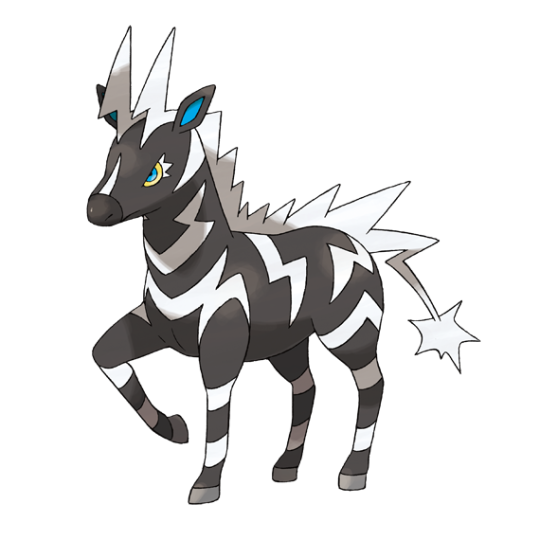

Zebstrika = the Grevy's Zebra, which is (you guessed it) endangered. There was once a Zebra variety called Quaggas that humans drove to extinction. We've attempted to bring it back with breeding to mixed results.
I could go on, but there's more...
Unova is also based on New York City and is one of the more developed Pokémon regions in terms of urbanization. It also is a Pokémon region where the local species are largely protected from outside, "invasive" species (to the point that the developers clearly scrapped having a Tauros and Luvdisc evolution and thought we wouldn't notice).
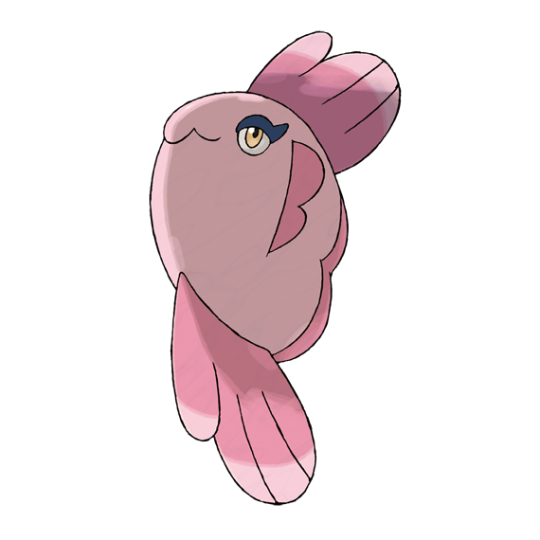
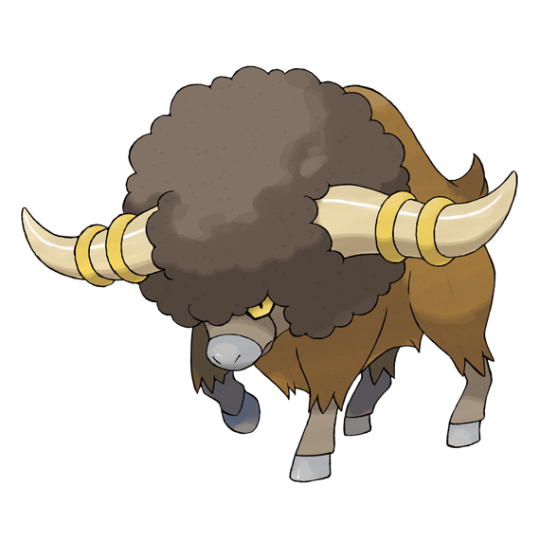
Really?
My speculation is that at some point in Unova's ancient past, it had a thriving savannah and jungle ecosystem and that the indigenous people there lived in relative harmony with the land. Sigilyph, Golerk, and Yamask echo the art and folklore of different ancient tribes from the Middle East to support this theory.



Golurk and Sigilyph both have Pokedex entries about protecting ancient civilizations, while Yamask wanders the ruins of ancient cities. Yamask is even said to be a dead human reincarnated into a Pokemon, possibly from these tribes(!)
Around 2500 years ago, the back story of the two brothers and the great dragon occurred, and ultimately, Unova was left open to urbanization after the split. Foreign humans started settling the land with more dangerous technology than the native Unovans (both human and Pokémon) could keep up with, and their urban sprawl destroyed many of the lush habitats there. As more and more people came to the area, they also brought in Pokémon that were not native to Unova, which had already adapted to blend in with human technology and likely assist their trainers in their destruction. Many Pokémon species were either driven to extinction or bred with compatible species to produce new variations, at the cost of never being able to gain their original forms back. Ancient Unova and its ecosystem was destroyed.




You can't tell me that these Pokémon are naturally adapted to a savannah or jungle environment. They were either invasive species or they rapidly adapted through crossbreeding to survive in the new urban sprawl.
This speculative history would reflect that of both the United States' and Japanese colonization. It would also explain why, in modern times, there is so much concern for Pokémon - particularly the native Unovan ones - and their wellbeing. These Pokémon are all that's left of a once diverse and wild ecosystem, and the people pf Unova overwhelmingly want to keep them from harm. This makes them susceptible to extremists who weaponize their righteous passion; enter Team Plasma.
#hellyeahlegendsunova
@franki-lew-yo
@thebigdeepcheatsy
14 notes
·
View notes
Text
she laugh


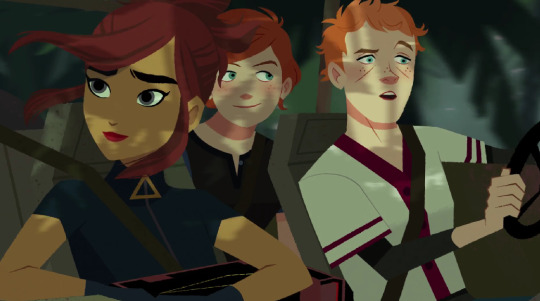
[image description: A series of 3 screenshots taken from the Netflix reboot of Carmen Sandiego. Zack, Ivy, and Carmen are in a car driving through the Indonesian jungle. While Zack is driving and talking, Carmen and Ivy listen to him. Carmen looks at him, chuckles, and then looks out towards the scenery. /End description]
#csweekly#carmen sandiego#she has a little silent giggle there and i live for it#why do yall think i have an entire 7pt series abt carmen just. showing emotions#i crave a CRUMB of her being a person
35 notes
·
View notes
Text

Jumanji (Chris Van Allsburg)
"A Leitner version of this book would cause the jungle to manifest physically in your home, with new animals escaping to hunt you down with every page turned."
The White Tiger of Kalimantaro from Classic Singapore Horror Stories (Damien Sin)
"Two retired cops travels to the Indonesian jungles to hunt a divine white tiger, only to realize the tiger to be old, mangy, lice-ridden and ready to die of age and disease. They kill it anyway, along with several other animals that they encounter along the way, in gruesome detail. Then the real white tiger shows up, and it turns out to be a god-like entity the size of an elephant possessing supernatural necromantic powers, given how it resurrects the old, slain tiger into a tiger zombie…"
#hunt poll#the hunt#poll#the magnus archives#leitner tournament#Jumanji#Chris Van Allsburg#The White Tiger of Kalimantaro#Classic Singapore Horror Stories#Damien Sin
4 notes
·
View notes
Text
Welcome to the Super Serpent Smackdown!
Our current bracket of beloved serpents:

(List of competing serpents will be under the cut if you can’t read it)
Propoganda is allowed and encouraged, so long as it is not hateful or slanderous towards any competing snakes, your fellow voters, or either blog moderator. Please tag this blog in your propoganda if you want us to reblog it! You can also just reblog from a poll and put your propoganda there, but tagging us boosts the odds that we’ll see it. Have fun and may the best serpent win!
Caduceus (Greek Mythology) (ELIMINATED: ROUND 1)
Eyelash viper (Real life) (ELIMINATED: ROUND 2)
Flying snake (Real life) (ELIMINATED: ROUND 1)
Ouroboros (Norse Mythology) (ELIMINATED: ROUND 4)
Wester hognose (Real life) (ELIMINATED: ROUND 3)
Dalamadur (Monster Hunter) (ELIMINATED: ROUND 1)
The serpent in the Garden of Eden (The Bible) (ELIMINATED: ROUND 2)
Changsheng (Genshin Impact) (ELIMINATED: ROUND 1)
Kaa (The Jungle Book) (ELIMINATED: ROUND 1)
The Great Devourer (Ninjago)
Serpent Demon (The Yin-Yang Master: Dream of Eternity) (ELIMINATED: ROUND 1)
Bush viper (Real life) (ELIMINATED: ROUND 2)
Wadjet (Egyptian Mythology) (ELIMINATED: ROUND 1)
Titanoboa (Real life) (ELIMINATED: ROUND 3)
Indonesian pit viper (Real life) (ELIMINATED: ROUND 2)
Naga (Shantae) (ELIMINATED: ROUND 1)
Masquerattle (Cassette Beasts) (ELIMINATED: ROUND 1)
Naydra (Legend of Zelda) (ELIMINATED: ROUND 2)
Asmodeus Poisonteeth (Redwall) (ELIMINATED: ROUND 1)
Arabian sand boa (Real life) (ELIMINATED: ROUND 4)
Undertide (Flight Rising) (ELIMINATED: ROUND 2)
Dojo (Xiaolin Showdown) (ELIMINATED: ROUND 1)
Giant Snake (Beetlejuice The Musical) (ELIMINATED: ROUND 1)
Jormungandr (Norse Mythology) (ELIMINATED: ROUND 3:
Hoopsnake (Folklore) (ELIMINATED: ROUND 2)
Karai (Teenage Mutant Ninja Turtles 2012) (ELIMINATED: ROUND 1)
Rainbow Serpent (Indigenous Australian Dreamtime)
Slow worm (Real life) (ELIMINATED: ROUND 1)
Naga (Minecraft Twilight Forest mod) (ELIMINATED: ROUND 1)
Seviper (Pokémon) (ELIMINATED: ROUND 2)
Manda (Naruto) (ELIMINATED: ROUND 1)
Viper (Kung Fu Panda) (ELIMINATED: ROUND 3)
Garter snake (Real life) (ELIMINATED: ROUND 3)
Twin Snakes (Haribo Candy) (ELIMINATED: ROUND 1)
Serperior (Pokémon) (ELIMINATED: ROUND 2)
Sandiramon (Digimon) (ELIMINATED: ROUND 1)
Pythor (Ninjago)
Gaboon viper (Real life) (ELIMINATED: ROUND 1)
Yaldabaoth (Homestuck) (ELIMINATED: ROUND 2)
Uk’otoa (Critical Role) (ELIMINATED: ROUND 1)
Mr. Snake (The Bad Guys) (ELIMINATED: ROUND 1)
Rope Snake (Mother 3) (ELIMINATED: ROUND 3)
Lernie (Hades) (ELIMINATED: ROUND 2)
Mara (Doctor Who) (ELIMINATED: ROUND 1)
Ball python (Real life) (ELIMINATED: ROUND 4)
Snakewater snakes (Team Fortress 2) (ELIMINATED: ROUND 1)
Apophis (Egyptian Mythology) (ELIMINATED: ROUND 2)
Rattlesnake Jake (Rango) (ELIMINATED: ROUND 1)
Leviathan (The Bible) (ELIMINATED: ROUND 1)
Quetzalcoatl (Aztec Mythology) (ELIMINATED: ROUND 3)
Brutus (The Reckoning) (ELIMINATED: ROUND 1)
Long-nosed whip snake (Real life) (ELIMINATED: ROUND 2)
Blue Malaysian coral snake (Real life)
Carniviper (Cassette Beasts) (ELIMINATED: ROUND 1)
Sapphire Dragon (Xiaolin Showdown) (ELIMINATED: ROUND 2)
Rattly (Donkey Kong) (ELIMINATED: ROUND 1)
Lindworm (Norse Mythology) (ELIMINATED: ROUND 2)
Hydra (Greek Mythology) (ELIMINATED: ROUND 1)
Ringneck snake (Real life) (ELIMINATED: ROUND 1)
Skittles (Real life) (ELIMINATED: ROUND 3)
Stringbean (The Owl House) (ELIMINATED: ROUND 1)
Medusa’s hair (Greek Mythology) (ELIMINATED: ROUND 2)
Sir Hiss (Robin Hood) (ELIMINATED: ROUND 1)
Snake (Snake) (ELIMINATED: ROUND 4)
12 notes
·
View notes
Text
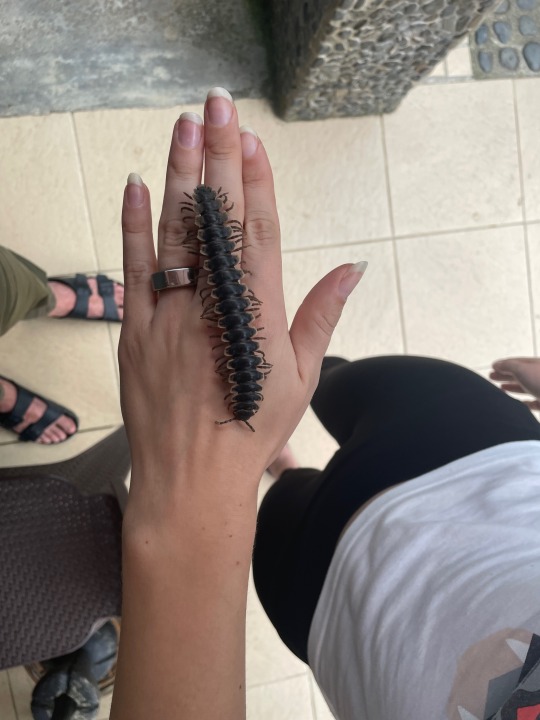
I like big bugs and i cannot lie
#bugs#bugslife#nature#huge#bug#view#Sumatra#indonesia#jungle#bukit lawang#travelling#indonesian jungle
2 notes
·
View notes
Note
Regional varient Florges with a headdress (possibly psychic type?) and regional varient eggecutor who's faces look like jungle ruins (possibly half rock type). Other than that idk
While I really like this idea I wasn't able to come up with any good ideas for a regional Florges since the flowers around its head already resemble Indonesian headdresses. So I didn't feel confident in my ability to create a design different enough to warrant a regional variation.
And with Eggecutor me and one of my brothers talked about the idea(he's been helping me with the region) but settled on not making a new regional form and using the Alolan form instead.
I do think Florges and Alolan Eggecutor can be found in the Donvian region though.
32 notes
·
View notes
Photo

Grandmother in Indonesia swallowed alive by 22ft-long python
An Indonesian woman has been eaten alive by a huge python after venturing into the jungle to collect rubber.
Horrified locals managed to catch the 22ft-long snake and cut it open - inside they found the undigested remains of the 54-year-old grandmother.
Jahrah, who like many Indonesians goes by just one name, had walked into the jungle alone in Jambi province, on the island of Sumatra, but did not return home.
Her family became worried and villagers sent search parties out into the forest.
Two days after her disappearance, they came across the huge snake, which had an enlarged stomach, resting in a clearing.
Video footage showed local men spearing the giant snake with a long stick and bashing it on its head.
They then cut open its stomach with knives and machetes, revealing the remains of the woman.
There is speculation that the clearing of forest for palm oil cultivation in countries such as Indonesia is leading to greater contact between pythons and humans.
The chief of the local village, named Anto, said the woman would have been snatched by the snake’s jaws and then slowly suffocated to death.
“The victim did not come home after saying goodbye to her family to go to the garden collecting rubber from trees on Friday. Her family then reported her missing to the local authorities, and a search has been carried out since then.
33 notes
·
View notes
Text
Asia’s youngest nation emerges as a voice of conscience on Myanmar
Two decades ago, freedom fighters on a mountainous island in southern Indonesia won a long, bloody struggle against a corrupt military regime, establishing East Timor, also known as Timor-Leste, the first independent state of the 21st century. Memories of airstrikes and indiscriminate killings are still fresh here. And they’ve led the country’s leaders to take an unusual interest in another fight for freedom in Southeast Asia.
In 2021, a group of generals overturned an elected government in Myanmar, formerly known as Burma, starting a civil war that some conflict monitoring groups consider the most extreme in the world today. Many countries have looked away — much as they did for 24 years, East Timor’s leaders say, as Indonesian soldiers fought Timorese independence fighters.
“For so long, nobody paid attention to us,” Xanana Gusmao, the prime minister of East Timor, said during an interview in the capital, Dili.Gusmao led the insurgency against the Indonesian military, later serving two terms as East Timor’s president and now, his second as prime minister. At 77, with a head of white hair and a stiff back from years of imprisonment, he still remembers every person he saw killed or tortured in the jungles of Timor, he said.
“I do not accept the suffering of the Burmese people,” Gusmao said. “I cannot.”
Many in East Timor, even opposition politicians and civil society leaders critical of Gusmao on other issues,said in interviews that they agree. The country of 1.3 million, with an economy one-seventh the size of Vermont, has gone further than almost any other in supporting the Myanmar resistance, receiving its leaders as state representatives and openly advocating on their behalf at international forums.In the coming months, East Timor will let Myanmar pro-democracy groups open offices in the country to help coordinate resistance activities and take in a number of political refugees, officials say.
Increasingly, human rights activists say they see Dili as a voice of conscience, challenging more powerful countries that have been too distracted or too divided to press for change in Myanmar. “What the Timorese are doing is vital,” said Debbie Stothard, a Malaysian rights advocate.
Regional inaction
The U.N. Security Council has repeatedly called on Myanmar’s military government to comply with a peace plan adopted by the Association of Southeast Asian Nations (ASEAN), and Western officials, including from the United States and the European Union, have also cited that plan for resolving the conflict.
But ASEAN, which operates on a principle of “noninterference” and includes Myanmar as a member, has largely failed to convince the junta to cooperate.
In 2021, ASEAN adopted the “Five-Point Consensus” on Myanmar, which calls for a cessation of violence and a dialogue among all parties. The junta signed the plan but has ignored it with little consequence. The military has ramped up airstrikes to a rate of nearly once a day, according to conflict monitoring groups, and faces mounting allegations from human rights groups of carrying out mass killings, beheadings and other atrocities. Myanmar has declined invitations from ASEAN to meet with resistance leaders.
“The five-point consensus has failed,” said Saifuddin Abdullah, who served until last year as foreign minister for Malaysia, an ASEAN member. The plan, which has no enforcement measures, is being disregarded not only by the Myanmar government but by other ASEAN members, Abdullah said.
In April, Thailand’s foreign minister traveled to Myanmar and met with junta leader Gen. Min Aung Hlaing without notifying other ASEAN members. Thailand, which borders Myanmar, has also hosted secret meetings with junta officials and mooted the idea of ASEAN “fully re-engaging” military leaders.
By normalizing relations with the Myanmar opposition, East Timor is trying to pull the region in the opposite direction — but at some risk to itself. The country is in the final stages of negotiating admission into the bloc and was allowed last year to attend meetings as an “observer.” Its outspoken stance on Myanmar could jeopardize its application or otherwise alienate some of its neighbors, analysts say.
East Timor can’t afford to be excluded from ASEAN, Gusmao admitted. With more than 40 percent of its population living in poverty, the country is in dire need of foreign investment. It has 15 years to find an alternative to its dwindling petroleum revenue, according to the International Monetary Fund, and has struggled since independence to feed its people,a problem set only to worsen with climate change.
At the same time, political scientists say, the country’s history has made it particularly sensitive to authoritarianism. East Timor has become probably the most robust democracy in Southeast Asia, according to experts.It’s the only country in the region ranked “free” by the think tank Freedom House and was recently listed 10th in the world for press freedom by Reporters Without Borders.
Smoking as he paced a meeting room in Dili’s government palace, Gusmao said that when he watches extensive coverage of Russia’s invasion of Ukraine on television, he often thinks about suffering elsewhere, in Yemen, Somalia, Myanmar. Powerful countries aren’t obliged to care about crises that don’t affect them, Gusmao said.
Among small, fragile nations, he added, “all we have is our solidarity.”
A diplomat expelled
When Gusmao was inaugurated in Dili two months ago, a visitor from Myanmar was seated in the front row alongside cabinet ministers and diplomats from various countries. It was Zin Mar Aung, foreign minister for Myanmar’s National Unity Government (NUG), formed in opposition to the junta after the coup.
That event marked the first time any country had formally received an NUG official and sparked indignation from Myanmar’s military government, which demanded that Dili cut contact with what it called “terrorist groups.” The following month, when East Timor hosted a second NUG official in Dili, the junta expelled Avelino Pereira, East Timor’s top diplomat in Myanmar.
While some countries have downgraded diplomatic relations with Myanmar, the junta had not thrown out any foreign representatives until Pereira and hasn’t since.When other governments meet with opposition officials, they’ve done so privately or informally. Dili’s actions were “public and senior level barbs” at the junta, said a Western embassy official in Yangon, who spoke on the condition of anonymity because that person had not been given authority to speak on the issue.
“It showed great courage,” said Aung Myo Min, the NUG’s minister for human rights, the second opposition official to visit Dili. “It empowers us to know we’re not alone.”
Some Timorese officials worry Pereira’s expulsion could affect the country’s ASEAN bid. But President Jose Ramos-Horta, who was behind both invitations to the Myanmar opposition figures, said he was unperturbed. “It was an honor,” he said, eyes crinkling behind dark Ray-Ban sunglasses during a recent interview as he was traveling between official engagements in Dili.
Ramos-Horta, who shares the 1996 Nobel Peace Prize with Bishop Carlos Filipe Ximenes Belo for his opposition of Indonesian oppression, led the “diplomatic front” for East Timor’s sovereignty. Over years, Ramos-Horta formed alliances with activists from other countries, including Myanmar.
In recognizing Myanmar’s opposition government, Ramos-Horta, 73, said he was paying back the support that Myanmar pro-democracy groups gave East Timor. But he was also, he said,acting in line with historical precedent: During World War II, the Allied powers recognized Free France, a government in exile, over the Vichy government that collaborated with Nazi Germany.
“Are we supposed to accept the norm that elections can be disregarded?” asked Ramos-Horta. “The answer, at least for us, is no.”
‘Who is listening?’
When Gusmao attended the semiannual ASEAN summit in August, he was feeling contrite, he said.
He’d been chided by his staff a few weeks earlier for saying East Timor would reconsider its ASEAN application if the bloc couldn’t end the violence in Myanmar. Those were “uncontrolled” remarks, he reflected later, and at the summit in Jakarta, he had intended to stick to his prepared speeches.
But faced with leaders from the United States, China and Russia, Gusmao decided again to go off-script. News reports had said Aung San Suu Kyi, Myanmar’s deposed civilian leader, was ill, Gusmao told the room. The junta should provide medical care, he appealed. No one responded.
“We will speak out, always. But we are a small country,” Gusmao said as he recounted the incident. “Who is listening?”
Diplomats and aid workersin Dili say Gusmao and Ramos-Horta might have a bigger impact than they know. The two leaders have allies in places from Europe to Africa, and they command respect as that rare breed of statesmen who fought for freedom and won, said Olufunmilayo Abosede Balogun-Alexander, the U.N. resident coordinator for East Timor. On the world stage, she added, “they have an outsize voice.”
Earlier this year, at the World Economic Forum meeting in Davos, Switzerland, Ramos-Horta said he watched as heads of state and chief executives rose one after another to lambaste Russia’s invasion of Ukraine and rally Western governments to supply Kyiv with weapons. He was stunned, he remembered, that virtually no one mentioned Myanmar.
“Next year, I will,” said Ramos-Horta, days before departing for the U.N. General Assembly session last month in New York, where he again met with the NUG. “I will say something,” he continued. “So at least people there will hear the word, ‘Myanmar.’”
37 notes
·
View notes
Note
if you had to be raised by a large predator in the indonesian rainforest which one would you want to be your family? and yes i did watch jungle book recently why do you ask
Sloth bear. Omnivorous diet is comparable to what a human might be able to live off of and nobody would ever ever fuck with you ever
29 notes
·
View notes
Text

Publicación en Instagram 🍪
Español:
Acabas de posar las maletas y ya Indonesia te reserva un montón de sorpresas: trabajo a tiempo parcial, picnic, y una excursión de ensueño hasta que… ¿¡los perros salen disparados!?
¡Vete a la aventura por la jungla de Indonesia, a partir de este miércoles, 1 de febrero, para descubrir el episodio 05 de Vida Alternativa Kentin, en Corazón de Melón!
English:
You’ve just barely arrived and Indonesia already has a few surprises for you: a part-time job, a picnic, and a dream hike until… the dogs get carried away?!
Go on an adventure in the Indonesian jungle, starting Wednesday, February 1 at 5AM EST on Alternate Life: Kentin!
Français:
À peine les bagages déposés et voilà que l’Indonésie te réserve déjà bien des surprises : travail à temps partiel, pique nique,, et une randonnée de rêve jusqu’à ce que… les chiens s’emballent ?!
Part à l’aventure dans la jungle indonésienne, dès ce mercredi, 1er février pour découvrir l’épisode 05 d’Alternate Life Kentin, sur Amour Sucré !
...
El episodio sale la proxima semana! Ya quiero jugarlo! 😍
Los perritos! 😢
#my candy love#amor doce#amour sucre#corazon de melon#alternative life#vida alternativa#mcl alternate life#mclal kentin#mcl kentin#cdm kentin
7 notes
·
View notes